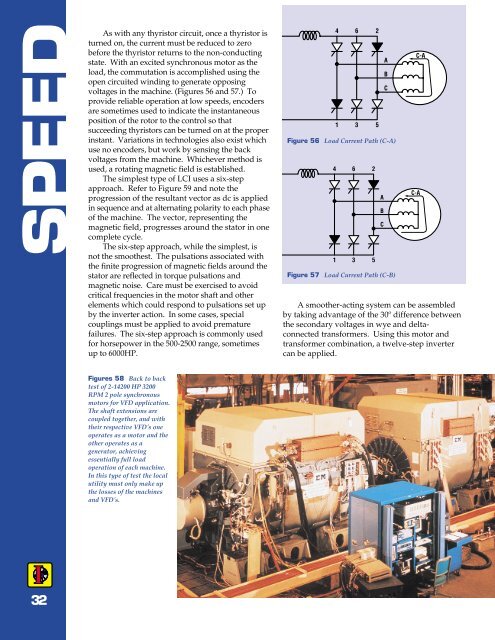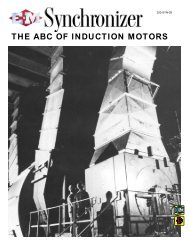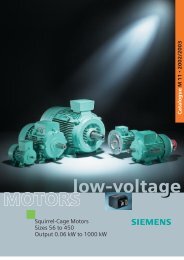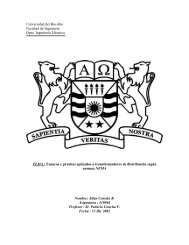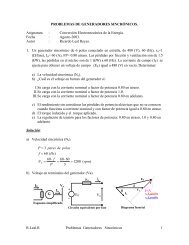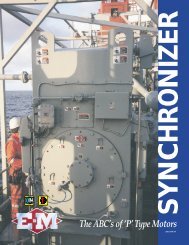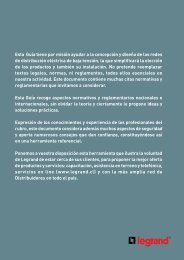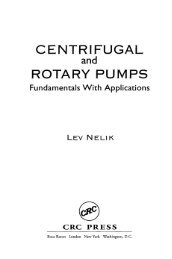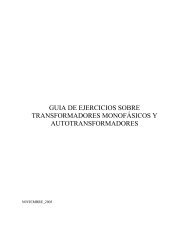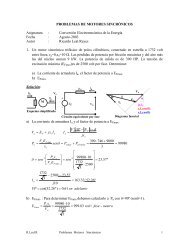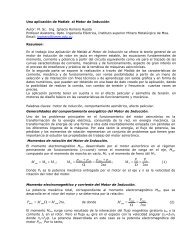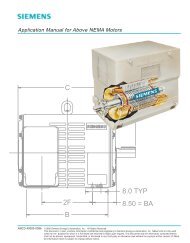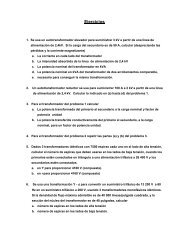Synchronous Motors
Synchronous Motors
Synchronous Motors
- No tags were found...
Create successful ePaper yourself
Turn your PDF publications into a flip-book with our unique Google optimized e-Paper software.
SPEEDAs with any thyristor circuit, once a thyristor isturned on, the current must be reduced to zerobefore the thyristor returns to the non-conductingstate. With an excited synchronous motor as theload, the commutation is accomplished using theopen circuited winding to generate opposingvoltages in the machine. (Figures 56 and 57.) Toprovide reliable operation at low speeds, encodersare sometimes used to indicate the instantaneousposition of the rotor to the control so thatsucceeding thyristors can be turned on at the properinstant. Variations in technologies also exist whichuse no encoders, but work by sensing the backvoltages from the machine. Whichever method isused, a rotating magnetic field is established.The simplest type of LCI uses a six-stepapproach. Refer to Figure 59 and note theprogression of the resultant vector as dc is appliedin sequence and at alternating polarity to each phaseof the machine. The vector, representing themagnetic field, progresses around the stator in onecomplete cycle.The six-step approach, while the simplest, isnot the smoothest. The pulsations associated withthe finite progression of magnetic fields around thestator are reflected in torque pulsations andmagnetic noise. Care must be exercised to avoidcritical frequencies in the motor shaft and otherelements which could respond to pulsations set upby the inverter action. In some cases, specialcouplings must be applied to avoid prematurefailures. The six-step approach is commonly usedfor horsepower in the 500-2500 range, sometimesup to 6000HP.4 6 21 3 5Figure 56 Load Current Path (C-A)4 6 21 3 5Figure 57 Load Current Path (C-B)C-AA smoother-acting system can be assembledby taking advantage of the 30º difference betweenthe secondary voltages in wye and deltaconnectedtransformers. Using this motor andtransformer combination, a twelve-step invertercan be applied.ABCABCC-AFigures 58 Back to backtest of 2-14200 HP 3200RPM 2 pole synchronousmotors for VFD application.The shaft extensions arecoupled together, and withtheir respective VFD's oneoperates as a motor and theother operates as agenerator, achievingessentially full loadoperation of each machine.In this type of test the localutility must only make upthe losses of the machinesand VFD's.32


